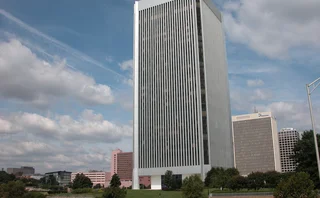
Called to account

Mark-to-market accounting has emerged as one of the bogeymen of the financial crisis over the past few months. Having been criticised by bankers for some time as exacerbating the crisis, calls have been steadily growing among regulators and politicians on both sides of the Atlantic to suspend or even scrap fair-value accounting for illiquid assets (see page 10).
As Risk reported last November1, dealers have complained that mark-to-market valuations are laying waste to their portfolios. Most agree low market values, caused by a drying up of liquidity and investor fear, have meant funds have faced increased margin calls and redemption requests, forcing them to sell assets at fire-sale prices. This pushes prices down further, causing market participants to re-mark their books, creating another wave of margin calls and forced sales. Looking purely at the fundamental credit risk, some structured credit transactions - particularly those referenced to corporate credit - should be trading at higher prices, claim dealers.
Proponents of mark-to-market counter that if a fund or dealer were to collapse today, the market price is the level at which they would be able to dispose of their assets. To use any other measure, they argue, would be misleading to shareholders.
It certainly seems true that scrapping mark-to-market would not be the panacea to the market's problems. Back in 2003, the Japanese banking system was on the verge of collapse, with local banks weighed down by trillions of yen worth of non-performing loans (NPLs). In this instance, doubts over whether banks were realistic in their valuations of impaired assets, and fears the true size of NPLs could be much higher, eventually led to a crisis of confidence in the banking sector. At the same time, there was little incentive for banks to resolve the problem quickly, causing a rut in the financial system for the best part of a decade.
At the very least, the mark-to-market of financial instruments in the current crisis has forced banks to confront their problems early and make substantial writedowns. Nonetheless, it's difficult to argue with those that claim marking to market at a distressed, fire-sale price may have exacerbated the scale of the losses.
But would suspending mark-to-market accounting at this late stage actually work in stabilising banks? It may well provide a welcome fillip to bank balance sheets, but would it help restore investor confidence? With many financial institutions on the brink only a few weeks ago, investors may see this as little more than accounting trickery, knowing that if a bank did collapse, it would be unable to realise the hold-to-maturity value when disposing of assets.
Whatever the regulators decide to do, fair-value accounting wasn't the cause of the crisis, and as such, scrapping the requirement to enforce it is unlikely to solve the market's ills.
- Nick Sawyer, Editor
Only users who have a paid subscription or are part of a corporate subscription are able to print or copy content.
To access these options, along with all other subscription benefits, please contact info@risk.net or view our subscription options here: http://subscriptions.risk.net/subscribe
You are currently unable to print this content. Please contact info@risk.net to find out more.
You are currently unable to copy this content. Please contact info@risk.net to find out more.
Copyright Infopro Digital Limited. All rights reserved.
You may share this content using our article tools. Printing this content is for the sole use of the Authorised User (named subscriber), as outlined in our terms and conditions - https://www.infopro-insight.com/terms-conditions/insight-subscriptions/
If you would like to purchase additional rights please email info@risk.net
Copyright Infopro Digital Limited. All rights reserved.
You may share this content using our article tools. Copying this content is for the sole use of the Authorised User (named subscriber), as outlined in our terms and conditions - https://www.infopro-insight.com/terms-conditions/insight-subscriptions/
If you would like to purchase additional rights please email info@risk.net
More on Regulation
UK investment firms feeling the heat on prudential rules
Signs firms are falling behind FCA’s expectations on wind-down and liquidity risk management
The American way: a stress-test substitute for Basel’s IRRBB?
Bankers divided over new CCAR scenario designed to bridge supervisory gap exposed by SVB failure
Industry warns CFTC against rushing to regulate AI for trading
Vote on workplan pulled amid calls to avoid duplicating rules from other regulatory agencies
Bank of Communications moves early to meet TLAC requirements
China Construction Bank becomes sole remaining China G-Sib not to have released TLAC plans
Industry pushes to extend review for Emir active accounts rule
Fears that compressed timeframe leaves less than a year to test if controversial policy is working
Banks will not be frowned upon for discount window borrowing – Fed official
Risk Live: more banks have completed paperwork to access Fed lending facility than a year ago
Capital One puts OCC’s tough stance on mergers to the test
Proposed Discover deal should be approved but will go under the microscope, ex-regulators say
As FCMs dwindle, regulators fear systemic risk
Panellists highlight dangers of clearing membership becoming more concentrated
Most read
- Top 10 operational risks for 2024
- The American way: a stress-test substitute for Basel’s IRRBB?
- Filling gaps in market data with optimal transport







